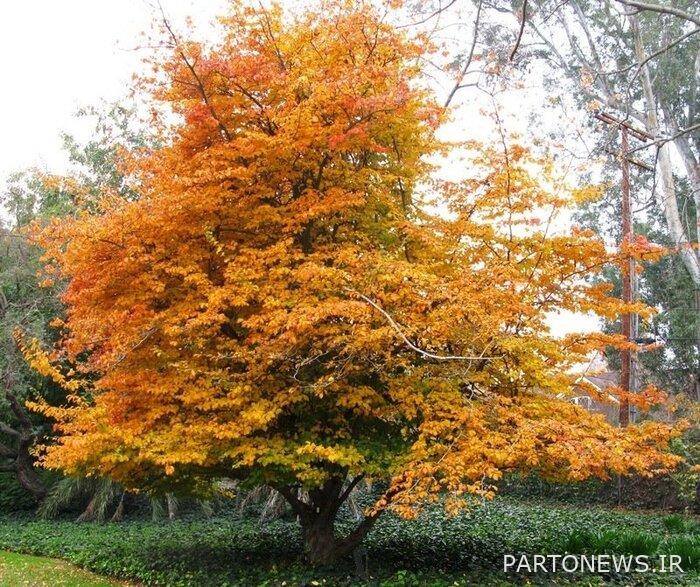Displaying the colors of the biblical tree

The forests of the north in the autumn season, with the display of its various colors, are actually the atlas of the whole view of the divine painting, Anjili is one of the most beautiful trees of the forests of the north, among them, whose colors make every viewer think.
According to IRNA, the wide plain of northern Iran with Hyrcanian forests is a land with beautiful views and a sea of heavenly waves that should be entrusted to the hearts and appreciate that the beautiful biblical tree is an example of heavenly souvenirs and a gift from God. Is.
Its atlas is wavy and its plain is the guide of souls, this blue green is a memory of the fathers and its main owner is the future generations, this green mirror with an area of a few in the north of Iran’s geography shines like a bright gem and evokes a true view of the beauty of a pure human being.
According to writers and poets, many books should be written in the effort to discover this truth, as if the forest is a living story from heaven. It is enough for every tourist and traveler of this country to take a step in the morning air of the autumn forests of the north, and, as the poet said, he will feel the dance of drunken flour in the morning air of the forest.
The fantastic season of autumn is the season of yellowing and withering and shedding of the leaves of the Hyrcanian forest trees, but Anjili tree has colorful and eye-catching leaves during these days and becomes the most beautiful tree of the Hyrcanian forests, which amazes every viewer.
According to forest experts, Anjili is a tree from the Hamamelidaceae family, whose leaves in autumn turn into various colors of yellow, fawn, red, purple, liver, etc., and adorns the northern forests in autumn.
They say that in autumn, in the part connecting the leaf to the branch of the plant, which is called the petiole, a small area called “interrupter zone” is created, which leads to the interruption of the transfer of plant sap.
As a result of the lack of plant sap, changes occur in the leaves of the plant, including the accumulation of pigments such as anthocyanin inside the vacuole of the leaf cells and its color change.

Experts in forest affairs believe that the leaves of most trees tend to turn yellow or pale brown in autumn, but in the Bible tree, due to the presence of many pigments, the color of the leaves becomes very diverse, so that one can see several colors at the same time.
Injili is the boomzad of the forests of northern Iran and the remnant of the third geological period. This tree is distributed in the forests of northern Iran, from the coasts of Astara in the north of Gilan province to Goli Dagh in the east of Golestan province, and extends from the coastal plains of the Caspian Sea to the highlands of Mianband.
The abundance of the evangelical tree in the north of Iran is high and it is easy to find it. Travelers who come from the Kandavan road to the north can find this tree, which has a scaly trunk, by stopping on the side of the road and walking for a few minutes on the mountainside after passing through Marzan Abad. And Nasiba with many depressions and ridges, but it is nice to see colorful leaves and take souvenir photos next to it to record in your travel diary.
The height of the evangeli tree reaches 25 meters. Bold burnt orange and bold and pure bright red are revealed, and this variety of colors creates beautiful landscapes, and in this sense, this tree is suitable for creating green spaces and also attracting tourists in our forests.
With this description, the truth is that the forests of the north are the atlas of the entire view of the divine painting, its spring is the smell of love and in the autumn the color and face of the divine floats, there is no shortage of these sublime examples that attract tourists who should appreciate this heritage. He knew the nature and had a basic plan for it in order to take full advantage of the variety of its features in addition to its complete protection.
The forests of northern Iran date back to more than one million years ago and have 90 tree species, 211 shrub species, and 1,558 grass and shrub species.
The area of these forest areas is about one percent of European forests, but the number of its species is 16 percent of the species found in the entire continent of Europe.
These comparisons show that the Hyrcanian forests in the north of Iran, despite their small area, have a great variety of species, and from this point of view, due to the biodiversity and the extent of the genetic reserves, it deserves a lot of research.


